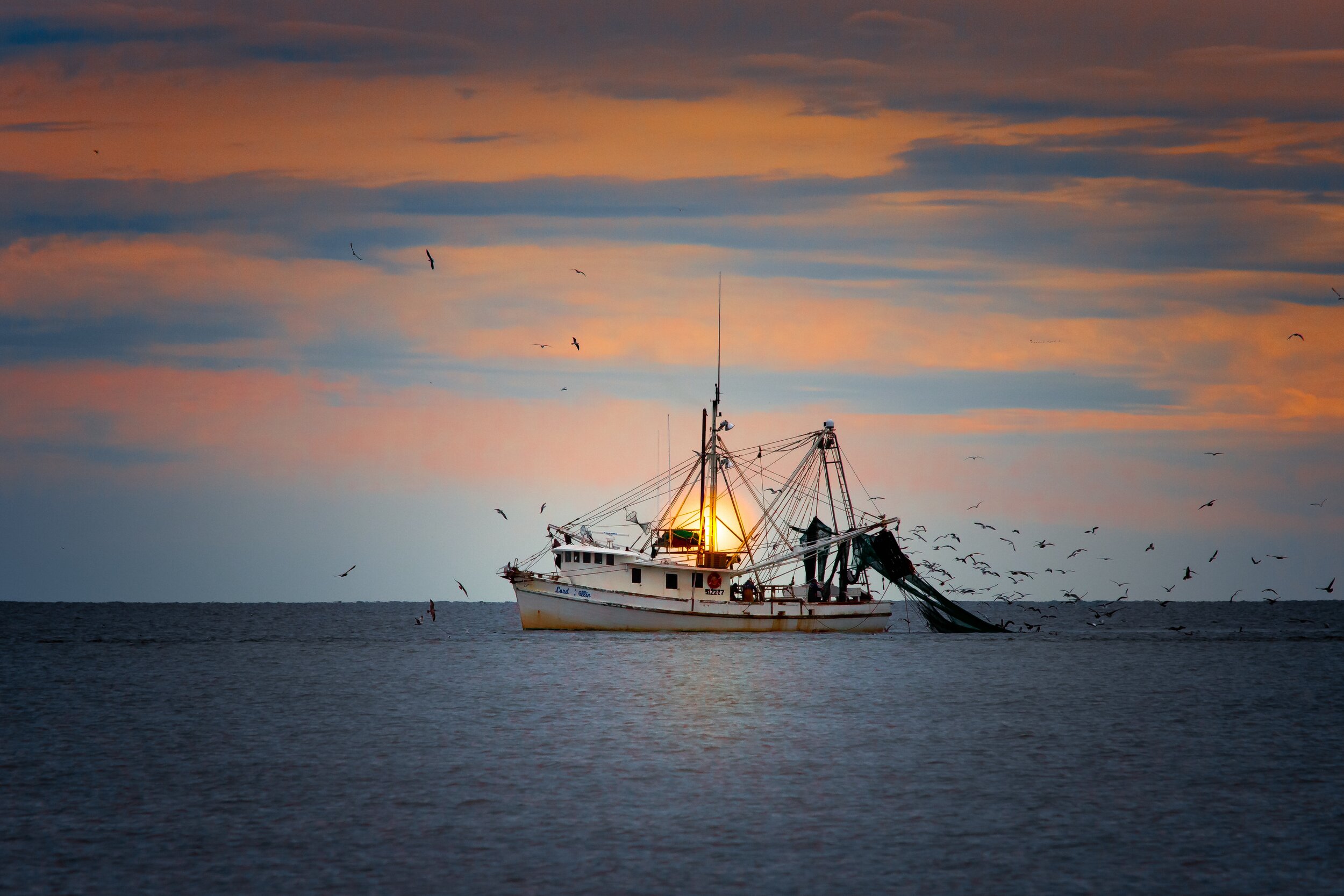
Shrimp is America’s favorite seafood and one of the most important to North Carolina’s coastal economy because the fishery supports the livelihoods of so many commercial fishermen.
North Carolina’s commercial shrimp fleet is made up of mostly trawlers that harvest in both internal, estuarine waters and the nearshore Atlantic Ocean. Internal waters include the Pamlico Sound and Core Sound, as well as portions of larger river like the Neuse, Pamlico, Pungo, and Bay. Historically, 75 percent of North Carolina shrimp are harvested in internal waters, with 25 percent coming from the Atlantic Ocean, mainly off our southern coast.
Most shrimp are caught at night using specialized harvest gear.
Unlike other South Atlantic coastal states that typically harvest only one or two species, North Carolina’s shrimp fishery includes three species: pink, brown and white. Pink shrimp, called “spotted” (Farfantepenaeus duorarum), are the least common to the state. Brown shrimp (Farfantepenaeus aztecus) are normally harvested in the summer months. White shrimp (Litopenaeus setiferus), commonly called “green tailed,” are harvested both in the spring and fall.
Unlike most marine finfish, all three shrimp species are an annual crop, meaning they can rebound from a very low population size in one year to a large population size the next, provided environmental conditions are favorable.
North Carolina has historically been the northernmost boundary on the East Coast for commercial quantities of shrimp because they do not thrive well in cold water. Since 2017, Virginia has consistently seen an increasing abundance of white shrimp in its nearshore ocean waters. Likewise, North Carolina has seen an increase in white shrimp landings during the early winter off its southern coast.
It is too early to tell whether changes in shrimp harvest by waterbody and season will be a consistent, long-term trend.
